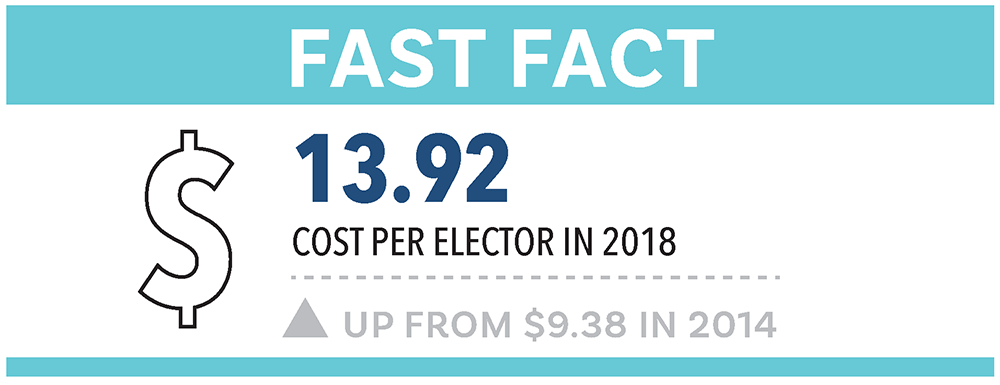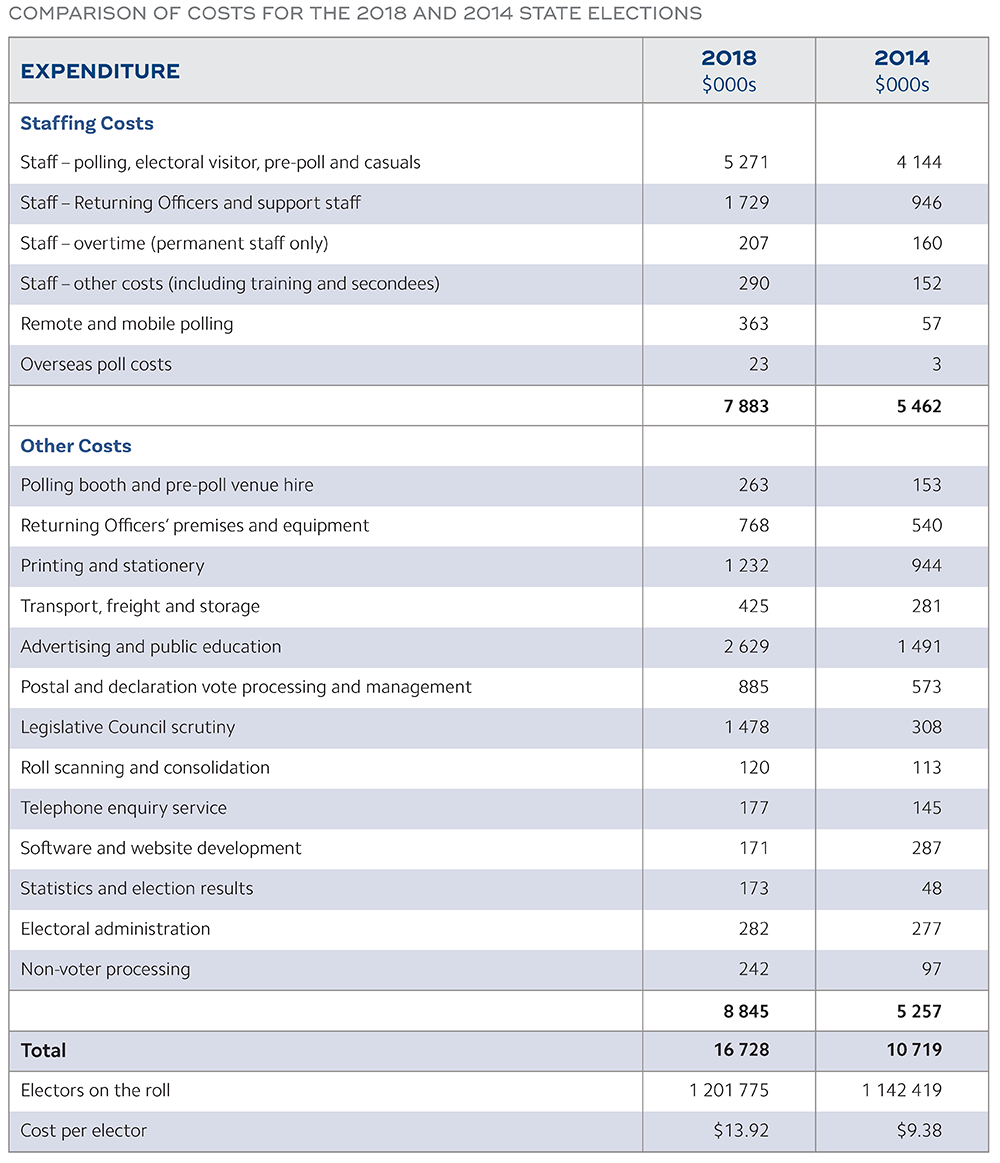INTRODUCTION
The majority of the cost ($16.442 million) was spent in the 2017-18 fi nancial year. Training materials amounting to $20,000 were purchased in 2016-17 and a further $266,000 was spent on post-election activities during the 2018-19 financial year, primarily on non-voter follow-up and ballot paper analysis and audits.
COMPARISON WITH BUDGET
The original budget allocation from the Department
of Treasury and Finance (Treasury) for the 2018 State
Election was $12.693 million in total, represented
by $12.407 million in the 2017-18 financial year and
$286 000 in 2018-19 for post-election activities.
This allocation was determined based on the same
activities and volumes as the 2014 State Election
plus infl ationary growth in costs over the four years
between elections, as well as a government initiative
in the 2017-18 budget.
A further budget allocation of $1.5 million was
provided during the 2017-18 fi nancial year for the
impacts of amendments to the legislation for the
Legislative Council voting system for the March 2018
election.
The total budget allocation from Treasury amounted
to $14.193 million.
Total actual expenditure was $2.535 million greater
than the total budget allocation, primarily due to:
- increases in postage costs paid to Australia Post in excess of infl ation
- signifi cantly higher volumes and costs of conducting pre-poll voting as well as vote scrutiny and count activities required in 2018
- the higher volume of Legislative Council preference votes received than expected
- an increase in training and survey/research activities compared with 2014 levels.
ECSA also received an investing expenditure allocation from Treasury of $1.4 million for a capital expenditure project to:
- replace the majority of state election management computer systems to allow ongoing maintenance and provide increased functionality ($1.0 million)
- implement a software system to assist with compliance with funding and disclosure legislation which came into operation after the 2014 State Election ($400 000).
COMPARISON WITH 2014 STATE ELECTION COSTS
Total actual expenditure of $16.728 million for the
2018 State Election compares with $10.719 million for
the 2014 State Election.
The increase of $6.009 million relates to:
Unavoidable cost pressures:
- a 5.2% increase in the number of electors
- compound annual inflationary growth of 1.5% to 2.5% resulting in an 11.1% increase in costs over four years
- increases in costs in excess of inflation:
- Postage paid to Australia Post
- Short-term rents paid for pre-poll venues and Returning Officers’ premises
- Materials costs for printing, cardboard and polling booth kits
- an increase in transport usage for secure delivery and collection of election material
- government initiative for an education and information campaign to encourage eligible members of the APY community to enrol to vote
- amendments to the legislation regarding the Legislative Council voting system
- higher volumes and costs of conducting prepoll voting that were significantly greater than forecast increases
- higher volumes and costs for vote scrutiny and count activities required in 2018, with pressures for timely results and complexities created by the number of two-candidate preferred counts that arose due to the success of non-Labor / Liberal candidates.
- improvements in training programs for all staff with contact with electors
- expansion of professional survey and research activities to support operational changes for future events, and potential legislative amendments
Cost per elector for the 2018 State election has risen to $13.92 from $9.38 in 2014. The increase is due to the unavoidable cost pressures and changes in conditions over the four years between elections.

